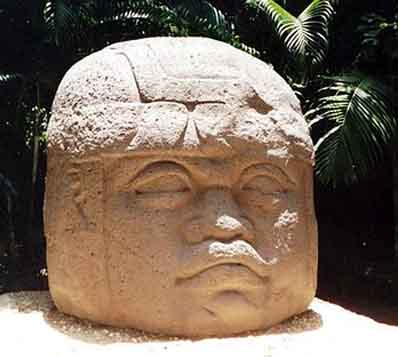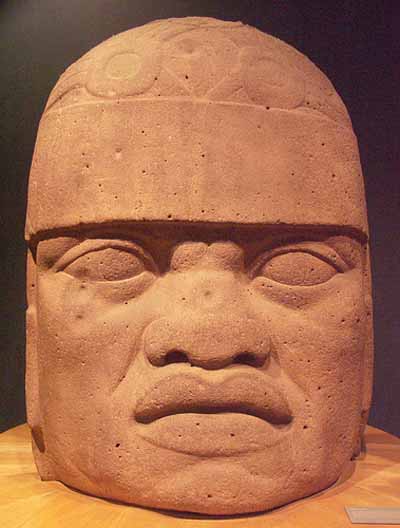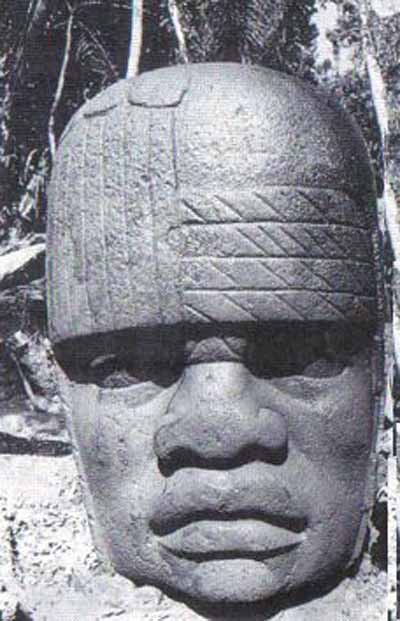See other Science/Tech Articles
Title: 9,000 year old Caucasian mummy found in Nevada
Source:
Youtube
URL Source: http://www.youtube.com/watch?v=No_aGmprKM8&feature=player_embedded#!
Published: Nov 3, 2011
Author: bikini1212
Post Date: 2011-11-03 21:38:16 by Original_Intent
Ping List: *Agriculture-Environment* Subscribe to *Agriculture-Environment*
Keywords: archaeology, North America, mummy, mystery
Views: 1087
Comments: 46
"> Poster Comment: I suspect that the real reason that the Paiute's do not want the mummy DNA tested is because if it is Caucasoid, as is "Kennewick Man" it provides another data point showing that the Indians were NOT the first inhabitants of the North American Continent. So, the real reason is ethnic politics. Of course there will be narrow parochial assertions made by the "White is Right" crowd as though this proves anything beyond the established evidence suggesting that North America has been inhabited much longer than the Lamestream Archaeologists wish to put forth and by more than one group having disparate geographical origins. Both groups are likely to have hissy fits.
Post Comment Private Reply Ignore Thread
Top • Page Up • Full Thread • Page Down • Bottom/Latest
Begin Trace Mode for Comment # 40.
#6. To: Original_Intent (#0)
http://solutreanliberationfront.blogspot.com/ I appreciate you bringing this to light, but this is hardly new news - One great book is Kyle Bristow's "White Apocalypse," one of my favorite reads of the last year and apparently he is coming out with a new book soon. He canvasses the Solutrean Hypothesis in this entertaining fictional book, and bold defenders of our people should be supported (IMO; autographed at bristow1@msu.edu) One can glimpse the totalitarian nature of the Judæo-Liberal Orthodoxy by witnessing the dearth of information on the Solutrean Hypothesis. Like all great things in the history of humans, White's quite likely "discovered" The Americas thousands of years prior to Yellows wandering over the Aleutian Bridge. It wouldn't take long for your research grant to be pulled as an Archeologist if you lent any credence to the extant evidence. Another good source is an old History Channel presentation, "Ice Age Columbus," which used to be available on YouTube and if not, I'd gladly send it to anyone via DropBox. Keep fighting our fight... it isn't only right, it is true. Mike
humor me here; if the white man inhabited merika eons before the injuns, how were they all removed, if they were so superior? was it the dinosours that killed them off, er what?
Good question and there is no simple answer because we are shy of any definitive evidence. First let me make clear I do not subscribe to the Solutrean Hypothesis - it relies on too short of a timeline as I think that North America was inhabited well before 17,000 years ago, and the hypothesis appears racially motivated. Now I don't reject it because of the implied racism because I go where the evidence goes. I also don't do as the lamestream archaeologists do and try to fit the facts to my preferred theory. The Solutrean Hypothesis also fails because it sticks pretty much to the lamestream chronology for the advent of mankind onto this continent, and that timeline falls woefully short of accounting for all of the evidence. Take for example the following sculptures: Now if I told you that those head sculptures had come out of Central Africa they would not at all be out of place. The broad lips and the wide flaring nose are typical of the Negroid peoples of Central and Southern Africa. What makes them out of place is that they were excavated in the area of the Yucatan that was inhabited by the Olmec Culture. What were Negroes doing in Southern Mexico/Central America in 3,000 B.C. which is the standard timeframe given for the existence of the Olmecs? Evidently they were there in sufficient numbers, or with sufficient frequency, to be immortalized in Olmec sculpture. I don't have an answer which explains it I just know what the evidence is. Standard lamestream archaeology tries to explain them away as just being "stylized" carvings that coincidentally, in great numbers, look like what we today would call Black Africans. As to the caucasoid types being wiped out that is refutable as well as the Mandan Indian Tribe of North Dakota (now extinct due to smallpox) had natural blondes and redheads and had people with blue, gray, and hazel eyes. In fact the early explorers called them the "White" Indians. While no doubt of mixed blood some of the East coast and Central Plains tribes have Roman and Phoenician features. I had a good friend who was a full blood Warm Springs Tribe Indian, and you could have put him into a Roman Centurion's uniform without him looking the least out of place - complete with noble Roman Nose. I could continue on with this for a while. Just one last example - Virginia Steen-McIntyre and the dating of the site uncovered at Hueyatlaco - in 1962. Rather than reinvent the wheel here is an excerpt from Michael Cremo and Richard Thompson's book "The Hidden History of the Human Race": As the above illustrates trying to get an accurate picture is problematic because lamestream Anthropologists and Archaeologists are wedded to a specific DOGMA concerning human evolution. Any data, no matter how well sourced, (and in some cases it is better sourced than the data used to support the lamestream) is summarily rejected because it contradicts the accepted theory and therefore cannot possibly be true because the theories that are dominant conflict with the actual observed data. So, returning to your question, I do not know who first inhabited the North American Continent. I would suggest that the suppositions and speculations in the lamestream textbooks are so off the mark of the truth as to be laughable, but I do not have a final answer. I could offer a speculation but it would take a post twice as long as this one just to begin to support it. However, just for fun let me tease you. What if there were a previous globe spanning civilization and they did themselves in, in a global thermonuclear war? There is evidence to suggest that someone in the distant past had nuclear weapons, just as there is evidence of high tech power tools having been used in constructing some of the pyramids and monuments of Egypt. There is a lot of information not in the mainstream which the mainstream keeps buried and will not even discuss because it totally blows apart the "popular" theories.
Without expanding much further than this - I believe there have been many globe trotting peoples throughout history. Seafaring people have been circumnavigating the earth since the days of Noah.
i believe there was a created people before us on our planet.
#43. To: Rotara (#40)
I don't know anything other than that we haven't been fully informed about much since we were born and in many instances we've been mis-informed. Biblically speaking, mention is made relative to vacant cities that once were populated.
Top • Page Up • Full Thread • Page Down • Bottom/Latest
#17. To: FWMale, original_intent, abraxas (#6)
#28. To: Artisan, abraxas, FWMale (#17)
humor me here; if the white man inhabited merika eons before the injuns, how were they all removed, if they were so superior? was it the dinosours that killed them off, er what?



"In the 1960s, sophisticated stone tools rivaling the best work of Cro-magnon man in Europe were unearthed by Juan Armenta Camacho and Cynthia Irwin-Williams at Hueyatlaco, near Valsequillo, 75 miles southeast of Mexico City.
Stone tools of a somewhat cruder nature were found at the nearby site of El Horno. At both the Hueyatlaco and El Horno sites, the stratigraphic location of the implements does not seem to be in doubt. However, these artifacts do have a very controversial feature: a team of geologists who worked for the U.S. Geological Survey gave them ages of about 250,000 years.
The geologists involved said four different dating methods independently yielded unusually great ages for the artifacts found near Valsequillo. The dating methods used were (1) uranium series dating, (2) fission track dating, (3) tephra hydration dating, and (4) study of mineral weathering. As might be imagined, the date of about 250,000 years obtained for Hueyatlaco by the team of geologists provoked a great deal of controversy. If accepted, it would have revolutionized not only New World anthropology but the whole picture of human origins. Human beings capable of making the sophisticated tools found at Hueyatlaco are not thought to have come into existence until about 100,000 years ago in Africa.
In attempting to get her team's conclusions published, Virginia Steen-McIntyre experienced many social pressures and obstacles. In a note to a colleague (July 10, 1976), she stated, "I had found out through backfence gossip that Hal, Roald, and I are considered opportunists and publicity seekers in some circles, because of Hueyatlaco, and I am still smarting from the blow."
The publication of a paper by Steen-McIntyre and her colleagues on Hueyatlaco was inexplicably held up for years. The paper was first presented at an anthropological conference in 1975 and was to appear in a symposium volume.
Four years later, Steen-McIntyre wrote to H. J. Fullbright of the Los Alamos Scientific Laboratory, one of the editors of the forever forthcoming book, "Our joint article on the Hueyatlaco site is a real bombshell. It would place man in the New World 10x earlier than many archaeologists would like to believe. Worse, the bifacial tools that were found in situ are thought by most to be a sign of H. sapiens. According to present theory, H.s. had not even evolved at that time, and certainly not in the New World." Steen-McIntyre continued, explaining, "Archaeologists are in a considerable uproar over Hueyatlaco. They refuse even to consider it. I've learned from second-hand sources that I'm considered by various members of the profession to be 1) incompetent; 2) a news monger; 3) an opportunist; 4) dishonest; 5) a fool. Obviously, none of these opinions is helping my professional reputation! My only hope to clear my name is to get the Hueyatlaco article into print so that folks can judge the evidence for themselves." Steen-McIntyre, upon receiving no answer to this and other requests for information, withdrew the article. But her manuscript was never returned to her.
A year later, Steen-McIntyre wrote (February 8, 1980) to Steve Porter about having her article about Hueyatlaco printed. "The ms I'd like to submit gives the geologic evidence," she said. "It's pretty clear-cut, and if it weren't for the fact a lot of anthropology textbooks will have to be rewritten, I don't think we would have had any problems getting the archaeologists to accept it. As it is, no anthro journal will touch it with a ten-foot pole."
Steve Porter wrote to Steen-McIntyre (February 25, 1980), replying that he would consider the controversial article for publication. But he said he could well imagine that objective reviews may be a bit difficult to obtain from certain archaeologists. The usual procedure in scientific publishing is for an article to be submitted to several other scientists for anonymous peer review. It is not hard to imagine how an entrenched scientific orthodoxy could manipulate this process to keep unwanted information out of scientific journals.
On March 30, 1981, Steen-McIntyre wrote to Estella Leopold, "The problem as I see it is much bigger than Hueyatlaco. It concerns the manipulation of scientific thought through the suppression of 'Enigmatic Data,' data that challenges the prevailing mode of thinking. Hueyatlaco certainly does that! Not being an anthropologist, I didn't realize the full significance of our dates back in 1973, nor how deeply woven into our thought the current theory of human evolution had become. Our work at Hueyatlaco has been rejected by most archaeologists because it contradicts that theory, period. Their reasoning is circular. H. sapiens sapiens evolved ca. 30,000-50,000 years ago in Eurasia. Therefore any H.s.s. tools 250,000 years old found in Mexico are impossible because H.s.s. evolved ca 30,000. Such thinking makes for self-satisfied archaeologists but lousy science!"
Eventually, Quaternary Research (1981) published an article by Virginia Steen-McIntyre, Roald Fryxell, and Harold E. Malde. It upheld an age of 250,000 years for the Hueyatlaco site. Of course, it is always possible to raise objections to archeological dates, and Cynthia Irwin-Williams did so in a letter responding to Steen-McIntyre, Fryxell, and Malde. Her objections were answered point for point in a counter-letter by Malde and Steen-McIntyre. But Irwin-Williams did not relent. The anomalous findings at Hueyatlaco resulted in personal abuse and professional penalties, including withholding of funds and loss of job, facilities, and reputation for Virginia Steen- McIntyre.
Her case opens a rare window into the actual social processes of data suppression in paleoanthropology, processes that involve a great deal of conflict and hurt. A final note: we ourselves once tried to secure permission to reproduce photographs of the Hueyatlaco artifacts in a publication. We were informed that permission would be denied if we intended to mention the lunatic fringe date of 250,000 years."
#29. To: Original_Intent (#28)
What if there were a previous globe spanning civilization
#40. To: noone222, O_I (#29)
Replies to Comment # 40. i believe there was a created people before us on our planet.
End Trace Mode for Comment # 40.